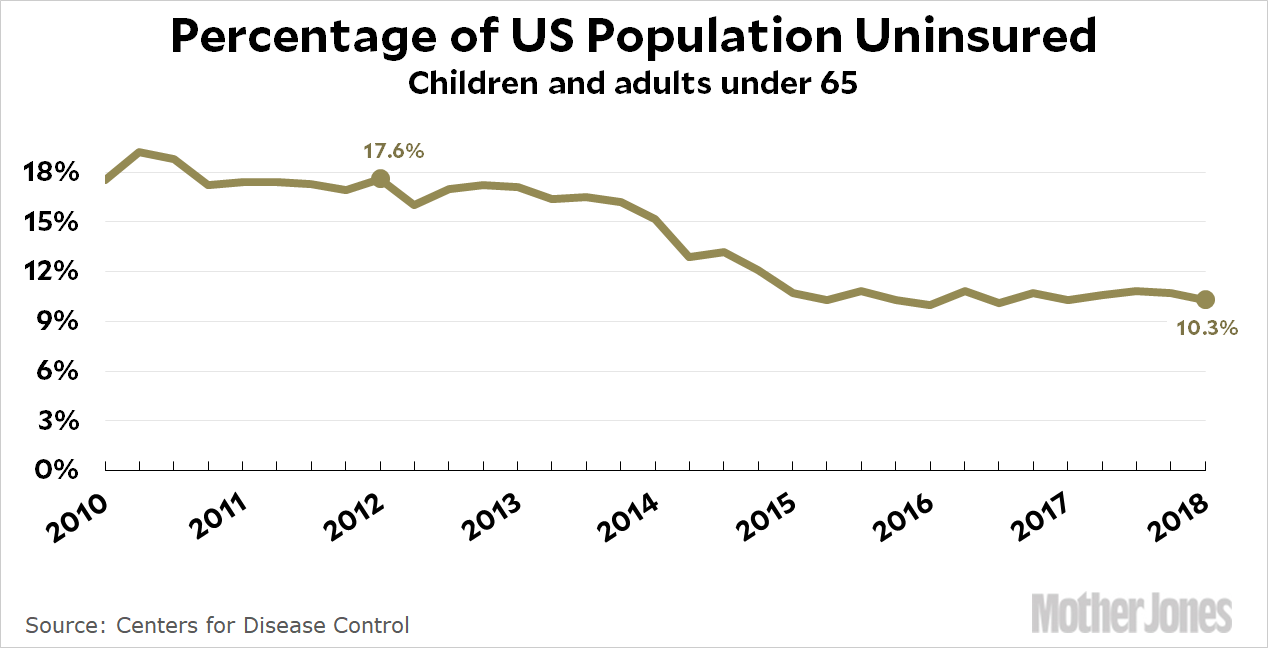According to the latest CDC survey, the uninsured rate declined during the first quarter of 2018:

This may seem puzzling since enrollment rates for Obamacare went down during signups for this year. But if fewer people signed up for Obamacare, how did the uninsured rate go down?
The answer is pretty simple: the economy continues to be strong and more people are getting jobs—which means that a lot of people are probably dropping Obamacare and signing up for employer insurance. This demonstrates something important: Obamacare isn’t everything. For one thing, it’s a pretty small part of the overall health insurance market. It’s even a pretty small part of the public health insurance market. For another, Obamacare is meant to be part of the social safety net, something that’s available to people if they need it. But like food stamps and unemployment insurance, we’d all prefer that the number of people who need it goes down. Over the past year or so, as the unemployment rate has dropped below 4 percent, the number of people who need Obamacare has almost certainly declined, and this accounts for some of the decline in enrollments.
Personally, I don’t think it accounts for the entire decline. Trump’s attempted sabotage probably had an effect too, though it turns out that he screwed up and did a poor job of sabotage. Generally speaking, however, it looks like there’s a pretty steady share of low-income workers who are willing to pay for Obamacare, and that doesn’t change a lot even when states and the federal government actively try to screw things up. Enrollments go down a little bit if people switch to employer insurance and go up a little bit when competition makes coverage more affordable. Overall, though, these are pretty small effects. Obamacare has done what it can, and that’s not likely to change much until we either improve it or Trump succeeds in destroying it.

















